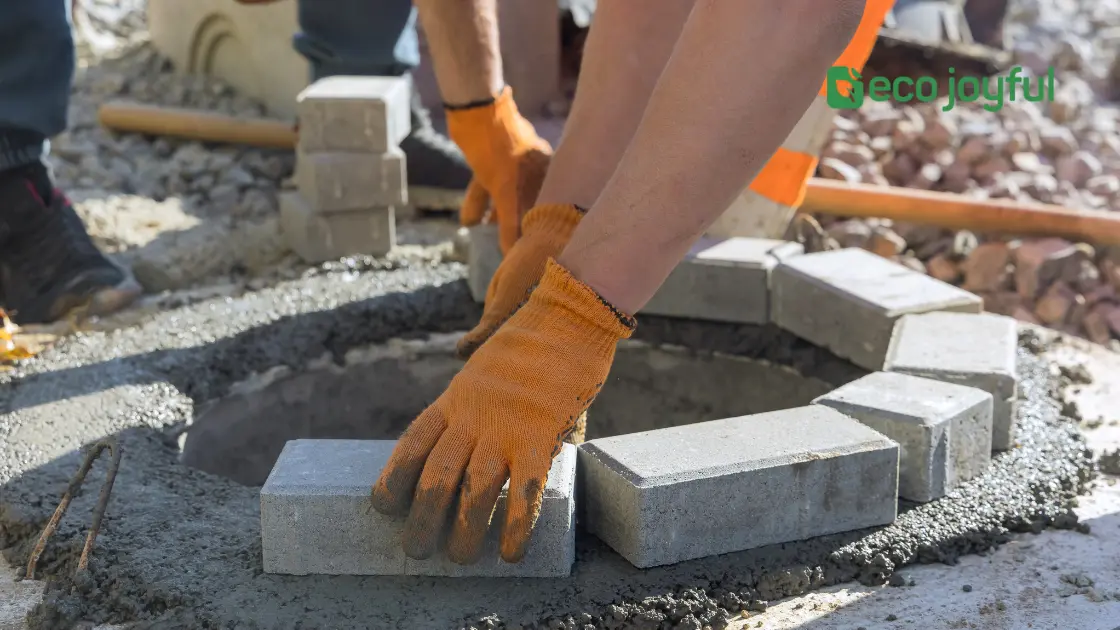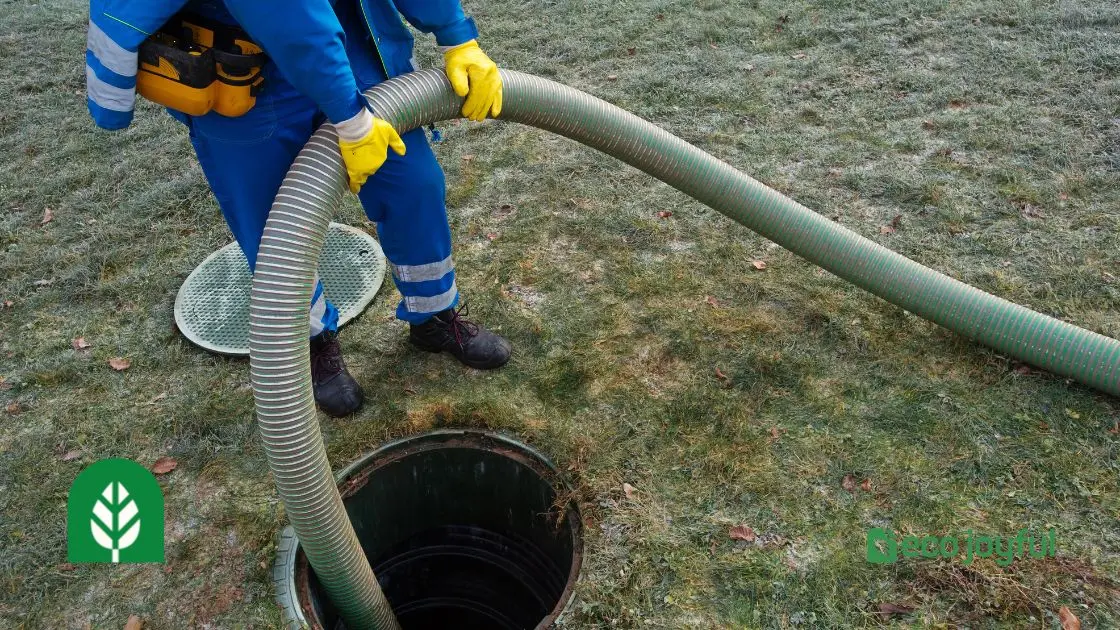The cost of an off grid septic system varies depending on various factors, such as geographical location, soil conditions, and system size. However, installation costs can range from around $5,000 to $20,000 or more.
Living off the grid can be an appealing option for those seeking self-sufficiency and a more sustainable lifestyle. One essential aspect of off-grid living is the septic system, which handles wastewater treatment and disposal. By utilizing renewable resources and minimizing dependence on public utilities, off-grid septic systems provide independence and reduce environmental impact.
To better understand the cost of an off-grid septic system, it is important to consider factors such as geographical location and soil conditions. The installation costs can vary significantly based on the complexity of the system and the amount of labor required. This article provides an overview of the factors influencing the cost of an off-grid septic system and offers insights into the potential expenses involved.
Table of Contents
Factors That Affect Off-grid Septic System Costs
When it comes to creating an off-grid living space, one of the most crucial elements to consider is the installation of a septic system. The cost of setting up an off-grid septic system can vary depending on several factors. By understanding these factors, you can better plan and budget for your off-grid septic system. Here are some key considerations:
Size And Complexity Of The System
The size and complexity of the off-grid septic system play a significant role in determining the overall cost. A larger system with more complex components and advanced features will naturally require more materials and time to construct, ultimately impacting the expenses. Additionally, a larger system may also necessitate the need for heavy machinery or specialized equipment during installation.
Soil Conditions And Site Location
The soil conditions and site location where the off-grid septic system will be installed can greatly affect the costs. Different soil types may require additional engineering, such as soil testing or soil amendments, to ensure proper wastewater treatment and absorption. The site location, whether it is flat or sloped, can also impact the system design and installation process, potentially leading to modifications that increase the overall costs.
Permitting And Regulatory Requirements
Obtaining the necessary permits and complying with regulatory requirements is an essential step in installing an off-grid septic system. The costs associated with permitting can vary significantly depending on local regulations and the complexity of the system. Some areas may also require additional inspections or approvals throughout the installation process, which can add to the overall expenses.
Installation And Labor Costs
The installation and labor costs of an off-grid septic system can vary based on factors such as the accessibility of the site, the distance from the main road, and the availability of skilled workers. If the site is challenging to reach or requires extensive excavation work, it may result in higher installation costs. Hiring experienced professionals and specialized labor for specific tasks can also add to the overall expenses.
Maintenance And Upkeep Expenses
Once the off-grid septic system is installed, it is crucial to consider the ongoing maintenance and upkeep expenses. Regular inspections, pumping, and maintenance activities such as adding bacteria-based treatments or replacing worn-out parts all contribute to the overall cost. Additionally, remote locations or difficult terrain may increase the expenses associated with regular system maintenance.
In conclusion, the cost of an off-grid septic system depends on various factors, including the size and complexity of the system, soil conditions and site location, permitting and regulatory requirements, installation and labor costs, as well as ongoing maintenance and upkeep expenses. By considering these factors, you can gain a better understanding of the potential costs and plan accordingly for your off-grid living space.
Choosing The Right Off-grid Septic System
When it comes to living off the grid, selecting the right septic system is essential for maintaining a sustainable and efficient waste management solution. Off-grid septic systems reduce environmental impact and offer long-term cost benefits. To ensure you make the best decision for your needs, it is crucial to compare different types of systems, evaluate their efficiency and sustainability, consider long-term cost benefits, and assess their environmental impact. Consulting with experts can also provide valuable insights to help you choose the most suitable off-grid septic system.
Comparing Different Types Of Systems
Before making a decision, it’s vital to assess various off-grid septic systems such as composting toilets, mound systems, and traditional septic tanks. Each system has its unique features, costs, and requirements, so it’s crucial to compare and contrast them to determine which one aligns with your off-grid living needs.
Evaluating Efficiency And Sustainability
When selecting an off-grid septic system, consider its effectiveness in treating and disposing of waste and its ability to maintain sustainable waste management practices. Efficient and sustainable systems ensure minimal environmental impact while maximizing the utilization of natural resources.
Considering Long-term Cost Benefits
Assessing the long-term financial implications of different off-grid septic systems is important. Considering the initial installation costs, maintenance expenses, and potential savings over time allows for a comprehensive evaluation of the cost benefits associated with each system.
Assessing Environmental Impact
Understanding the environmental impact of off-grid septic systems is critical. Consider factors such as water conservation, waste reduction, and the system’s overall carbon footprint to ensure minimal disruption to the surrounding ecosystem.
Consulting With Experts
Seeking advice from off-grid living and septic system experts can provide valuable insights into which system best suits your specific requirements. Their knowledge and experience can help you make an informed decision that aligns with your sustainability and efficiency goals.
Budgeting For An Off-grid Septic System
When it comes to building an off-grid septic system, it is essential to budget your expenses wisely. Proper budgeting allows you to plan and allocate funds for the various components of the septic system installation, ensuring a smooth and cost-effective process. In this article, we will delve into the key aspects you need to consider while budgeting for your off-grid septic system.
Determining Your Needs And Usage
Before setting a budget for your off-grid septic system, it is crucial to determine your specific needs and usage requirements. This includes considering the number of people in your household, the amount of water usage, and the size and type of the septic system that will best suit your property.
To estimate your water usage, you should take into account daily activities such as showers, toilet flushing, laundry, and dishwashing.
Understanding your needs and usage will help you accurately assess the size and capacity of your off-grid septic system, preventing any unexpected expenses due to inadequate planning.
Estimating Material And Equipment Costs
Estimating the costs of materials and equipment is a critical aspect of budgeting for your off-grid septic system. Researching and comparing prices allows you to find the most cost-effective options for components such as septic tanks, drain fields, pipes, and fittings.
You can create a comprehensive list of all the materials and equipment required for your septic system and contact various suppliers to get accurate pricing information. This will enable you to choose high-quality products within your budget and avoid any potential cost surprises during the installation process.
Factoring In Professional Services
When budgeting for an off-grid septic system, it is essential to include the costs of professional services. Depending on your level of expertise, you might require assistance from licensed septic system installers or plumbers. They possess the necessary knowledge and experience to ensure a proper installation, meeting all local building codes and regulations.
Research local professionals and request quotes from them to estimate the expenses involved. Taking into account these costs will help you create a realistic budget and prevent any setbacks or complications during the installation process.
Accounting For Site Preparation
Before installing an off-grid septic system, site preparation is a crucial step that needs to be considered in your budget planning. Site preparation involves tasks such as clearing trees or vegetation, leveling the ground, excavating, and preparing the drainage area.
While the extent of site preparation required can vary, it is crucial to allocate funds for this aspect of the project. If necessary, consulting with a professional for assistance in assessing the site preparation requirements will ensure an accurate budget estimation.
Contingency Budgeting
Lastly, it’s important to have a contingency budget when planning for an off-grid septic system installation. Unforeseen expenses or unexpected challenges may arise during the process, and having a contingency fund will help you address these issues without compromising the project’s progress.
Set aside a percentage of your overall budget, typically around 10-15%, to account for any unforeseen costs. This will provide you with the necessary financial cushion to handle unexpected situations and ensure the successful completion of your off-grid septic system.
Cost Breakdown Of Off-grid Septic System Components
When it comes to off-grid living, every component of your septic system plays a crucial role in ensuring efficient waste management. Understanding the cost breakdown of these components can help you plan your budget effectively.
In this section, we will explore the cost of each essential element, including the septic tank, distribution system, drain field or leach field, pump and controls, and ventilation system.
Septic Tank
The septic tank is the heart of your off-grid septic system, responsible for holding and separating solid waste from wastewater. The cost of a septic tank typically depends on its size and material. Here is a breakdown of the average cost range for different types:
| Septic Tank Type | Average Cost Range |
|---|---|
| Concrete | $800 – $2,500 |
| Fiberglass | $800 – $1,500 |
| Polyethylene (Plastic) | $400 – $1,200 |
Keep in mind that these costs may vary based on factors such as location, installation complexity, and any additional features like filters or risers.
Distribution System
The distribution system of an off-grid septic system is responsible for evenly distributing the pre-treated wastewater to the drain field or leach field. The cost of the distribution system components can vary depending on the system design and materials used. Here is an approximate cost breakdown:
- Pipes and fittings: $200 – $500
- Manifold or distribution box: $100 – $300
- Valves and couplings: $50 – $150
It is important to note that the cost can vary depending on the size of the system and any additional features required for efficient distribution.
Drainfield Or Leach Field
The drain field or leach field is where the wastewater is dispersed into the soil for natural filtration and treatment. The cost of the drain field installation can vary based on several factors, including soil conditions, size requirements, and local regulations. Here is a rough estimate for the cost of a drain field:
- $2,000 – $6,000 for a basic drain field
- $6,000 – $10,000 for an advanced or alternative drain field
It’s essential to consult with local professionals to assess your site’s specific needs before determining the exact cost of your drain field.
Pump And Controls
In some off-grid septic systems, a pump and controls are required to ensure proper flow and distribution of wastewater. The cost of the pump and controls can vary based on the system’s complexity and requirements. Here is a general cost range:
- Septic pump: $200 – $600
- Control panel: $300 – $800
These costs may increase if there are additional features needed, such as alarms or advanced pump systems.
Ventilation System
A ventilation system helps to regulate air movement within the septic system, preventing the build-up of harmful gases. The cost of a ventilation system can vary depending on the design and installation requirements. Here is a general cost breakdown:
- Pipe materials (PVC): $50 – $100
- Fans or blowers: $100 – $300
- Vent caps or covers: $10 – $50
It is crucial to properly install and maintain your ventilation system to ensure its effectiveness.
By understanding the cost breakdown of these essential components, you can make informed decisions when planning your off-grid septic system. Remember to consider factors such as local regulations, installation complexity, and any additional features needed for maximum efficiency. Ensuring that each component is carefully chosen and adequately installed will contribute to the overall smooth functioning of your off-grid septic system.
Additional Considerations For Off-grid Septic System Costs
When it comes to off-grid living, having a septic system in place is crucial for proper sanitation and waste management. However, the cost of installing an off-grid septic system is just one piece of the puzzle. It’s important to consider the additional costs that may arise throughout the lifespan of the system. These considerations include regular inspection and maintenance, potential repairs and replacements, upgrading for increased capacity, future expansion possibilities, and evaluating the return on investment.
Regular Inspection And Maintenance
Regular inspection and maintenance are essential to ensure the longevity and proper functioning of your off-grid septic system. Routine inspections by a professional can help identify any potential issues early on and prevent costly repairs down the line. Maintenance tasks such as pumping the tank, checking for leaks, and cleaning filters should be done regularly. By investing in regular inspections and maintenance, you can avoid major repair expenses and keep your septic system running smoothly.
Potential Repairs And Replacements
No matter how well-maintained your off-grid septic system is, there may come a time when repairs or replacements are necessary. Components such as pipes, pumps, and drain fields can degrade over time and may need to be repaired or replaced. It’s important to budget for these potential expenses and be prepared to address any issues that arise. By taking proactive measures and addressing repairs promptly, you can minimize costs in the long run and ensure the efficient operation of your septic system.
Upgrading For Increased Capacity
As your off-grid lifestyle evolves and your needs change, you may find that your septic system no longer meets your requirements. For example, if you add additional living space or install new water fixtures, you may need to upgrade your septic system to accommodate the increased capacity. Upgrading your system may involve enlarging the tank, adding extra drain fields, or installing a more efficient treatment system. It’s important to factor in the cost of these upgrades when considering the overall cost of your off-grid septic system.
Future Expansion Possibilities
When planning your off-grid septic system, it’s important to consider any potential future expansions to your property. If you have plans to build an additional structure or increase the occupancy of your existing property, you may need to design your septic system to accommodate these future developments. By thinking ahead and accounting for expansion possibilities, you can save yourself the hassle and expense of retrofitting or adding to your septic system later on.
Evaluating Return On Investment
Investing in an off-grid septic system is a significant financial commitment. It’s crucial to evaluate the return on investment to determine if the cost of the system aligns with the benefits it provides. Consider factors such as increased property value, reduced environmental impact, and long-term savings on utility bills. While the initial cost of an off-grid septic system may be higher compared to traditional systems, the long-term benefits can outweigh the expenses. Take the time to analyze the potential return on investment and make an informed decision based on your specific circumstances.
Conclusion
Investing in an off-grid septic system can save you money in the long run. While there are upfront costs, the long-term benefits of sustainability and self-sufficiency make it a worthwhile investment. By carefully considering the factors that affect the cost, you can make an informed decision that aligns with your budget and environmental values.








